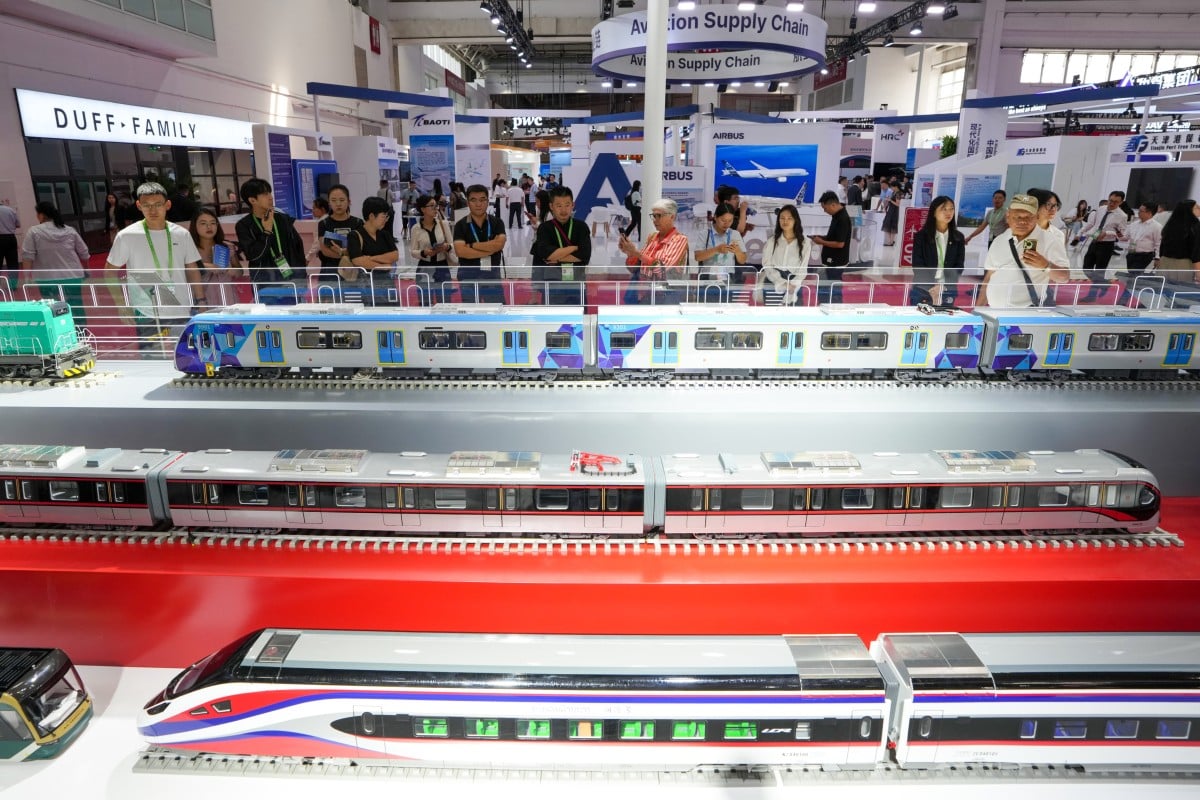Chinese and American rail transport firms continue to show dedication to enhancing collaboration - including initiatives in third-country markets - despite the ongoing trade competition between the world's two biggest economies.
As the US has long been a leader in freight rail and urban transportation, while China has become a major force in high-speed rail, the two nations could enhance collaboration in the railway transport industry, according to Everett Wakai, the commercial affairs minister-counsellor at the US embassy in Beijing.
He addressed the US-China Rail Transit Industry Roundtable on Friday at the China International Supply Chain Expo. Attendees included representatives from several American companies involved in the rail industry. A major topic of discussion was the possibility of supply-chain collaboration.
Are you curious about the most significant issues and developments happening globally? Find the solutions withSCMP Knowledge, our latest platform offering handpicked content including explainers, FAQs, analyses, and infographics, presented by our acclaimed team.
Guan Jiaxin, the vice president of China Civil Engineering Construction Corporation, stated that the state-owned company works closely with American firms regarding machinery and equipment.
"Major projects and markets led by our company extensively utilize construction equipment from Caterpillar and power generators from Cummins," Guan mentioned during the round-table discussion. Caterpillar and Cummins were among the American companies present.
"We are excited about the potential for further collaboration with the US in international project investments, construction, and operations, including joint funding, design, and advisory services... in regions where American companies are well-established, such as Latin America, the Middle East, Africa, and Europe," he stated.
For many years, American manufacturers of railway equipment have provided services for China's rail projects, both domestically and internationally – particularly those associated with the Belt and Road Initiative, such as urban rail transit systems like subways and traditional railway developments, according to company representatives at the event.
Cui Yao, the head of Wabtec (China), stated that revenue has increased over the past two decades from nearly nothing to an annual average of $500 million, with $300 million coming from sales within the Chinese market and $200 million from products made in China and sent to international markets. He referred to this as a "major achievement."
Local suppliers of Wabtec also gain from the company's operations - the US-based firm, located in Pennsylvania, buys goods valued at US$400 million each year from Chinese vendors, and it anticipates a similar situation this year.
During the event, a representative from another US company stated: "Our operations are not affected by the tariff, since materials supplied to China's projects in third countries are exempt from US-China tariffs."
He mentioned, under the condition of anonymity to adhere to company policy, that shipments for China's local projects had not yet been disrupted, due to the company's extensive localization efforts, including the creation of multiple joint ventures with state-owned enterprises in China.
However, he warned that although Chinese rail equipment manufacturers might discover some opportunities in the U.S. metro market, they would encounter almost no chances in the railway industry, as it is controlled by domestic companies.
On Wednesday, the U.S. government declared the end of $4 billion in federal support for a high-speed rail initiative in California, stating that the project was unable to meet its intended objectives. This delayed endeavor, which started in 2009, sought to develop a train system that could transport passengers between Los Angeles and San Francisco in less than three hours.
Government officials stated that the "unlawful" action would be contested.
More Articles from SCMP
Things to do in Hong Kong, July 20-26
How Hong Kong actor Adam Cheng transitioned from being a television idol to a stock market curse
A man from Hong Kong confesses to manslaughter and arson in connection with the death of a neighbor during a suicide attempt.
Investors watch China's Politburo meeting for indications of efforts to address excessive industrial capacity
Bar Leone's Lorenzo Antinori on the key to his recent Asia's 50 Best Bars victory
This piece was first published in the South China Morning Post (www.scmp.com), a top news outlet covering China and Asia.



